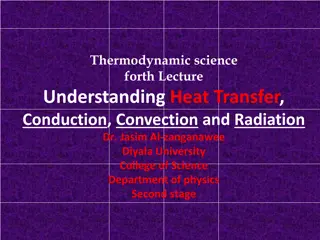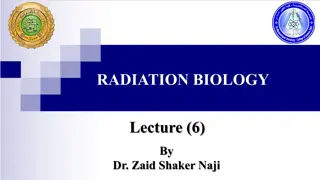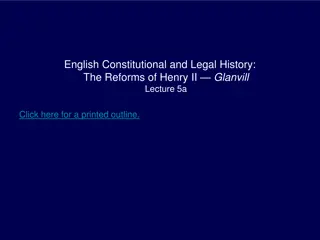Understanding Oxygen Transport in the Respiratory System
Explore the intricate process of oxygen transport in the respiratory system, covering topics such as the composition of air, gaseous transport, factors affecting oxygen-hemoglobin dissociation, atmospheric air composition, diffusion of gases, effects of water vapor, and the methods of oxygen transport via plasma and hemoglobin. Gain insights into the crucial role of oxygen in sustaining life and the mechanisms involved in its efficient delivery to tissues.
Download Presentation

Please find below an Image/Link to download the presentation.
The content on the website is provided AS IS for your information and personal use only. It may not be sold, licensed, or shared on other websites without obtaining consent from the author. Download presentation by click this link. If you encounter any issues during the download, it is possible that the publisher has removed the file from their server.
E N D
Presentation Transcript
Respiratory System Dr Archna Ghildiyal Associate Professor Department of Physiology KGMU
LECTURE:6 Contents Composition of air Gaseous transport: Oxygen O2-Hb dissociation curve Factors affecting O2-Hb dissociation
Learning Objectives Composition of air Partial pressure of gases Oxygen Transport : Methods Role of hemoglobin O2-Hb dissociation curve Factors :Shifting the curve
Atmospheric Air:Composition Total Pressure (at sea level)=760mm Hg N2= 78.6% PN2= 596mm Hg O2= 20.8% Po2= 160 mm Hg CO2=0.04% PCo2=0.3mm Hg H20=0.5% PH2O=3.7mm Hg
Diffusion of Gases Alveolocapillary Membrane Along partial pressure gradient, Until equilibrium is reached Oxygen diffuses from the alveolus into the blood Carbon dioxide from the blood into the alveolus
Contd Carbon dioxide : very soluble in blood, allowing many molecules to diffuse along small pressure gradient Oxygen : less soluble, requires a larger concentration gradient
Effect of water vapor Fresh air enters respiratory passage Immediately mixes with water vapor (Humidification) Water vapor lowers the partial pressure of gases (total pressure remains constant) PO2 is lowered to about 149 mmHg Constant PH2O=47mmHg
Oxygen Transport Method Percentage Dissolved in Plasma 3 % Combined with Hemoglobin 97 %
O2 Dissolved in plasma 0.3 ml O2per 100 ml of blood(arterial PO2 Of 100 mm Hg) Normal PO2of 95mmHg :0.29 ml of O2is dissolved per 100 ml of water in blood PO240 mmHg in tissue capillaries-0nly 0.12 ml of O2remains dissolved 0.17 ml of O2is normally transported in dissolved state to the tissues by each 100 ml of arterial blood flow
Hemoglobin Structure Protein made up of 4 subunits Every subunit contains a heme moiety attached to a polypeptide chain.
Haemoglobin Haemoglobin molecules can transport up to four O2 s When 4 O2 s are bound to haemoglobin, it is 100% saturated, with fewer O2 s it is partially saturated Haemoglobin s affinity for O2 increases as its saturation increases Oxygen binding occurs in response to the high PO2 in the lungs
Oxyhemoglobin Formation Oxygen molecule reversibly attaches to the heme portion of hemoglobin Heme unit contains iron ( Fe+2 ) which provides the attractive force 02 +Hb HbO2
Terms Oxygen Capacity : Maximum quantity of oxygen that will combine chemically with the hemoglobin in a unit volume of blood Oxygen Content: how much oxygen is in the blood
Contd Oxygen Saturation : Percentage of all the available heme binding sites saturated with oxygen Volume percent (vol%) refers to the milliliters of oxygen extracted from a 100 ml sample of whole blood
Maximum amount of O2 that can combine with Hb of blood Normal Hb -15 gms/100 ml of blood Each gm of Hb can bind 1.34 ml of O2 (In chemically pure Hb-1.39 ml O2) Total O2 bound with Hb : 15x1.34=20 ml (if Hb 100% saturated)
O2 released from Hb in tissues In normal systemic arterial blood -Total O2 bound with Hb 19.4ml/100 ml of blood(97% saturated) Tissue capillaries: Combined O2- 14.4ml/100 ml of blood(PO2 40mmHg,75% saturated Hb) Under normal conditions about 5ml of O2 is transported from the lungs to the tissues by each 100 ml of blood flow
O2-Hb dissociation curve Illustrates the %saturation of Hb with oxygen at various PO2 values Sigmoid shaped curve Progressive increase in the % of Hb bound with O2 as blood PO2 increases P50 :point at which Hb is 50% saturated
Contd Plateau: Provides a margin of safety in the oxygen carrying capacity of the blood Steep portion: Small changes in Oxygen levels can cause significant changes in binding. This promotes release of O2 to the tissues
Effect of changing hemoglobin concentration
Role of Hb in maintaining nearly constant PO2 in tissues Function as Tissue O2 buffer system Stabilize the O2 pressure in the tissues Tissue PO2 can not rise above 40 mmHg
Factors that Shift the Oxygen- Hemoglobin Dissociation Curve pH and PCO2 Temperature 2,3-diphosphoglycerate(2,3-DPG)
pH and PCO2: Bohr effect Increased delivery of O2 to the tissues when CO2 & H+ ions shift the O2-Hb Dissociation curve to the right
2,3-diphosphoglycerate Byproduct of anaerobic glycolysis Present in high concentration in red blood cells because of their content of 2,3-DPG mutase Diminishes the affinity of hemoglobin for O2 (Right Shift)
Contd Importance: Normal DPG in blood keeps the curve slightly to the right all the time In Hypoxic condition Disadvantage: Excess DPG : Difficulty for the hemoglobin to combines with O2 in the lungs
Question:1 At which of the following sites is the partial pressure of oxygen (PO2) highest? A. Exhaled gas B. Anatomical dead space at the end of expiration C. Anatomical dead space at the end of inspiration D. Alveolar gas
Question:2 The exchange of gases between inhaled air and Pulmonary blood is referred as: A) Cellular respiration B) External respiration C) Internal respiration D) Circulatory respiration
Question:3 Most Oxygen in the blood is transported as: A)De-oxyhemoglobin B)Dissolved in plasma C)Oxy-hemoglobin D)Reduced hemoglobin
Question:4 Shift of O2-Haemoglobin dissociation curve to the right is caused by . (in blood): A) Decreased hydrogen ions B) Increased CO2 C) Decreased temperature D) Decreased BPG
Question:5 Oxyhaemoglobin dissociation curve is shifted to the left by: A) increase in arterial PCO2 B) acidosis C) increase in 2,3 DPG D) fall in temperature
Answers 1- C 2- B 3- C 4- B 5- D
References Guyton & Hall.Text book of Medical Physiology Ganong s Review of Medical Physiology Berne & Levy Physiology























